Related Research Articles
Stephen Edward Robinson was a religious scholar and apologist, who was a member of the Church of Jesus Christ of Latter-day Saints.
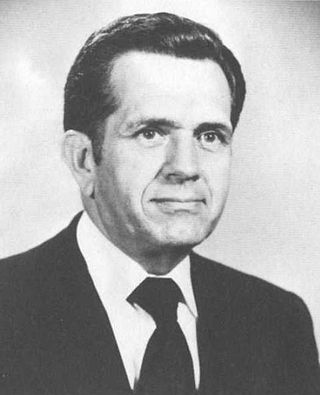
Boyd Kenneth Packer was an American religious leader and educator who served as president of the Quorum of the Twelve Apostles of the Church of Jesus Christ of Latter-day Saints from 2008 until his death. He also served as the quorum's acting president from 1994 to 2008, and was an apostle and member of the Quorum of the Twelve from 1970 until his death. He served as a general authority of the church from 1961 until his death.
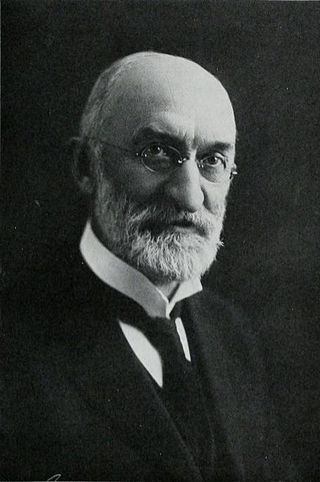
Heber Jeddy Grant was an American religious leader who served as the seventh president of the Church of Jesus Christ of Latter-day Saints. Grant worked as a bookkeeper and a cashier, then was called to be an LDS apostle on October 16, 1882, at age 25. After the death of Joseph F. Smith in late 1918, Grant served as LDS Church president until his death.
Joseph Francis Merrill was a member of the Quorum of the Twelve Apostles of the Church of Jesus Christ of Latter-day Saints from 1931 until his death.

The Church Educational System (CES) of the Church of Jesus Christ of Latter-day Saints consists of several institutions that provide religious and secular education for both Latter-day Saint and non–Latter-day Saint elementary, secondary, and post-secondary students and adult learners. Approximately 700,000 individuals were enrolled in CES programs in 143 countries in 2011. CES courses of study are separate and distinct from religious instruction provided through wards. Clark G. Gilbert, a general authority seventy, has been the CES Commissioner since August 1, 2021.
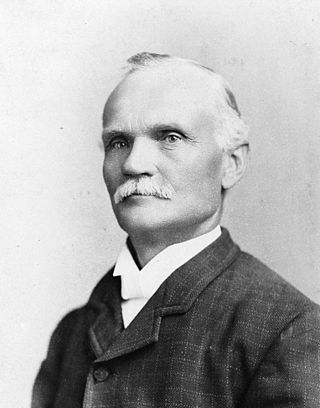
Karl Gottfried Maeser was a prominent Utah educator and a member of the Church of Jesus Christ of Latter-day Saints. He served 16 years as principal of Brigham Young Academy. Although he was not the first principal of the Academy, he is considered its founder. The Academy later became Brigham Young University (BYU) in 1903.

An Institute of Religion is a local organization that provides religious education for young adults who are members of the Church of Jesus Christ of Latter-day Saints, with those of other religions also welcome to participate. Local institutes may function in church meetinghouses but may also have a stand-alone building situated adjacent to colleges or universities. The LDS Church describes the purpose of the Institute program as "weekday religious instruction for single and married postsecondary students." Institutes of Religion are professionally directed as part of the Church Educational System, with responsibility for the seminary program and the church's higher education institutions, including Brigham Young University (BYU).

Milton Reed Hunter was an American author, educator, and religious leader in the Church of Jesus Christ of Latter-day Saints. He served as a member of the church's First Council of the Seventy from 1945 until his death in 1975.

Thomas J. Yates was the first seminary teacher in the Church of Jesus Christ of Latter-day Saints. In 1912, the first released-time seminary classes met in a building adjacent to Granite High School in Salt Lake City, Utah.

Daniel K Judd is an American religious leader and educator who served as the first counselor to A. Roger Merrill in the Sunday School General Presidency of the Church of Jesus Christ of Latter-day Saints from 2004 to 2009. Judd also served as chair of the Ancient Scripture Department of Brigham Young University (BYU). In 2019, Judd was named the Dean of BYU's Department of Religious Education.
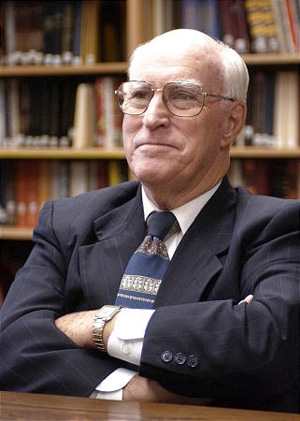
Robert James Matthews was a Latter-day Saint religious educator and scholar, teaching in the departments of Ancient Scripture and Religious Education at Brigham Young University (BYU) in Provo, Utah.
Richard Charles Neitzel Holzapfel is a former professor of Church History and Doctrine at Brigham Young University (BYU) and an author on topics related to the Church of Jesus Christ of Latter-day Saints, Western and Utah History, and the New Testament. As of 2018, Holzapfel is working in the LDS Church's Missionary Department as a senior manager.
John Max Madsen is a general authority of the Church of Jesus Christ of Latter-day Saints. He has been a general authority since 1992.
Noel Beldon Reynolds is an American political scientist and an emeritus professor of political science at Brigham Young University (BYU), where he has also served as an associate academic vice president and as director for the Foundation for Ancient Research and Mormon Studies (FARMS). He was a member of the BYU faculty from 1971 to 2011. He has also written widely on the theology of the Church of Jesus Christ of Latter-day Saints, of which he is a member.
James Brown "Jim" Allen is an American historian of Mormonism and was an official Assistant Church Historian of the Church of Jesus Christ of Latter-day Saints from 1972 to 1979. While working as Assistant Church Historian, he co-authored The Story of the Latter-day Saints with Glen Leonard. After Ezra Taft Benson dismissed the book as secular new history, other events led to the dissolution of the LDS Church History department in 1982. Allen resigned as Assistant Church Historian in 1979, returning to work at Brigham Young University (BYU) full-time.
Barry Robert Bickmore is a professor in the department of geological sciences at Brigham Young University (BYU). He is also a devout Mormon, having written Restoring the Ancient Church: Joseph Smith and Early Christianity as well as several articles that have been published in the FARMS Review.
LaMar C. Berrett was an American professor of religion at Brigham Young University (BYU). He was a member of the Church of Jesus Christ of Latter-day Saints.
Keith W. Perkins was a professor of Church History and Doctrine at Brigham Young University (BYU). He has written widely on the history of the Church of Jesus Christ of Latter-day Saints in the period when it was headquartered at Kirtland, Ohio. Perkins has written articles on figures in the recording of the history of the LDS Church, such as Andrew Jenson, whose work as a historian was the subject of Perkins' masters' thesis. His thesis was cited in Charles T. Morrissey's article "We Call it Oral History", which moved the accepted time of the origin of the term back from the late-1940s to the mid-1860s.
Linda Kjar Burton was the sixteenth general president of the Relief Society of the Church of Jesus Christ of Latter-day Saints from 2012 to 2017.
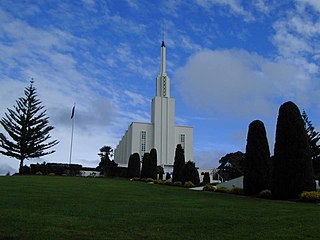
The Church of Jesus Christ of Latter-day Saints established its first New Zealand branch in 1855. It reported 116,883 members in 229 congregations in New Zealand as of 2021, making it the second largest body of LDS Church members in Oceania behind Australia. The LDS Church has one temple in New Zealand, with a second under construction and a third announced. The 2018 census recorded 54,123 individuals, or 1.2% of respondents, self-identify as belonging to the faith. 313,000 respondents objecting to answer the religion census question in 2018 were not counted in the number or percentages.